The reason we decided to get sheep was based on information I acquired by listening to the Wise Tradition’s podcast (one of my faves!) episodes 32 & 33. In these particular episodes, Hilda interviews Allan Savory of the Savory Institute, which is based in South Africa. Their sole purpose in life is to ‘facilitate the large-scale regeneration of the world’s grasslands and the livelihoods of their inhabitants, through holistic management.‘ They have over 100 hubs worldwide, including one at Michigan State University!
The Institute works with many different groups to accomplish their mission, including farmers and ranchers, showing each how to more holistically manage their livestock in a way that improves the health of the land they reside on.
So we decided to get some sheep to put into practice a multi-species grazing technique I read about on their site. My plan, to graze the sheep along with our dairy cattle to improve pasture condition and also to harvest an occasional meat lamb. A win-win, right?
A quick Craigslist search later and I was on my way to Wausau for our St. Croix sheep, a breed I chose because they are what’s known as hair sheep- the type that do not need sheering.
So, off I went in our Sienna minivan. Yes, I took our minivan to pick up seven sheep. What could go wrong? I had all the back seats folded down, and in their place we laid down a piece of linoleum, topped with several blankets to absorb any liquids that may fall…
Once the sheep were loaded, I drove home, as quickly as possible because sheep do not smell like roses… and when I got home I learned why people do not haul sheep via minivan. I really really wanted to shampoo my van that 90 degree day in any case…
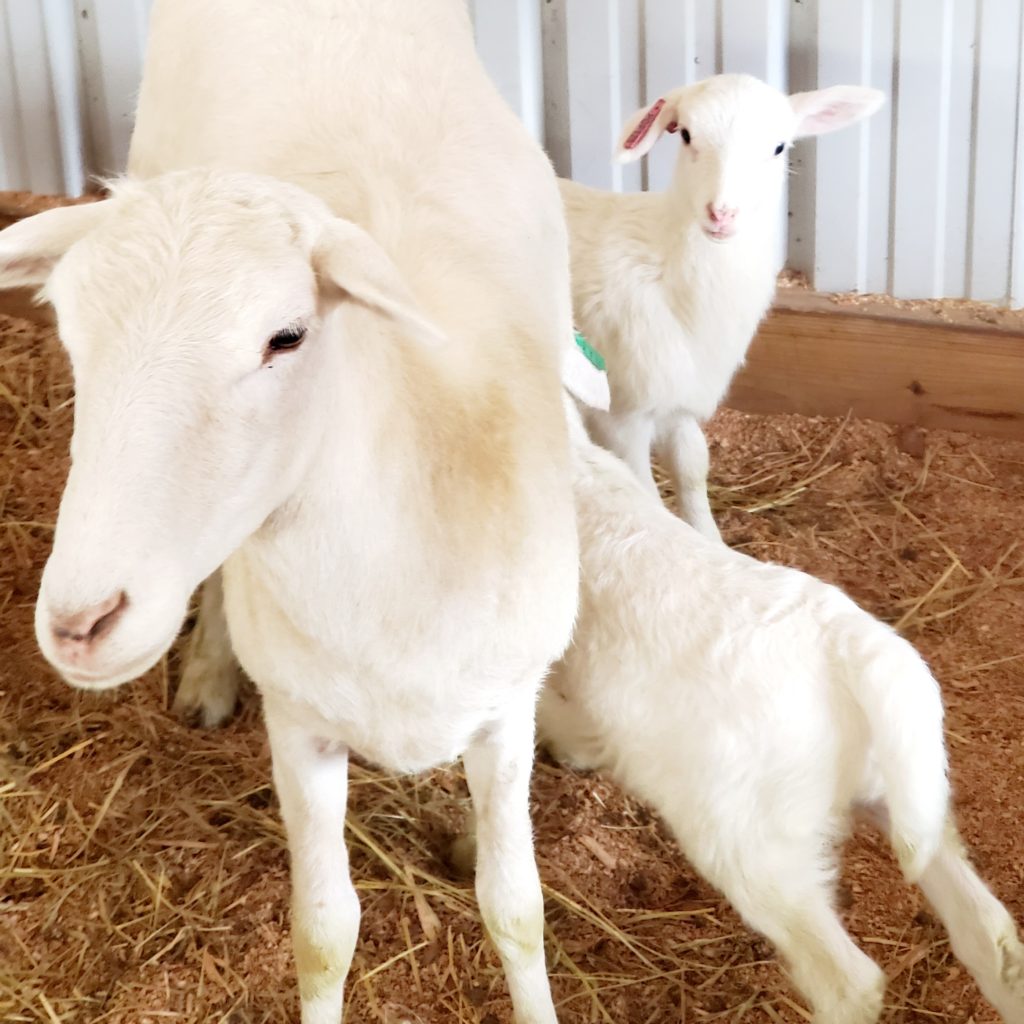
Anyway, we had our sheep! Now we just had to figure out how to secure our cow pasture enough that we could rotate them behind the cattle.
While in quarantine though, the sheep proved to us that they are quite a bit more conniving than we were advised they would be. They were constantly out! Thank goodness they were very very fond of the grain bucket! It became increasingly clear that it would not be practical to graze them with the dairy cows for a few reasons:
- Sheep cannot be allowed to ingest dairy cow minerals. This would be fatal to them (something we learned later).
- When determined to escape, sheep can fit through fence openings much smaller than their body. Don’t ask me how this is possible.
- We didn’t factor into the equation all of the various gates we work our cows through between pastures and between the pastures and the milking parlor.
So we had to decide, do we attempt to shore up the cattle fence enough to pasture the sheep with the cows (and create a way to keep minerals segregated), do we abandon the idea altogether, or do we keep the sheep but in a separate enclosure and abandon the grazing technique? We decided the latter, because by the time quarantine was up, and we were ready to make fence, we were absolutely in love with our sheep!!! We had also added another nine sheep to the flock, 6 ewes and 3 rams, all another type of hair sheep breed called Katahdin.
Oh my goodness, this is getting long, but hang in there!
We decided to turn one of our four pig pastures into a place for the sheep. We don’t really need four pastures for the hogs, and can make due with just three because they are pretty large areas. Upon closer examination of the hog pastures though, we discovered that we had a much bigger problem- Jimsonweed!
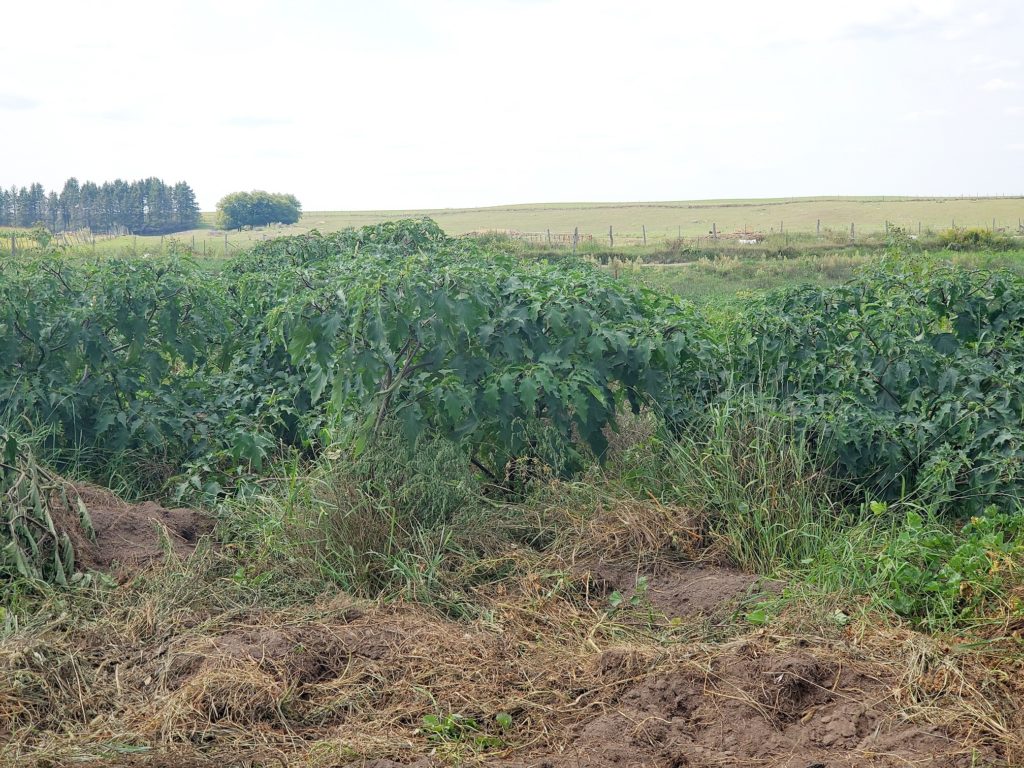
Jimsonweed is a toxic plant. The pigs knew enough to leave it alone, but we weren’t sure how the sheep would react and definitely didn’t want to take a chance. We could have sprayed it with chemicals, and though it would have been easier, it’s just not how we do things around here. The animals we pasture and feed from our land provide food for us and our customers and we are committed to raising them without the use of chemicals.
We really have no idea where the jimsonweed came from. We’ve been here for 16 years and have never seen anything like it! The only thing we can think of is that the hogs somehow rooted up the seeds (that stay viable for up to 100 years btw). Have you seen what a pig can do to pasture?

Andy used the skidsteer to scrape up all of the toxic weeds into a huge pile that our neighbor hauled away with his dump truck- five loads worth! The plants were relocated to an area of the farm where they would not be a problem and hopefully not ever grow back.
It’s been a long road, but our beautiful sheep are now settled in to their pasture, and we are so happy they are part of the family!
We think they love us too!
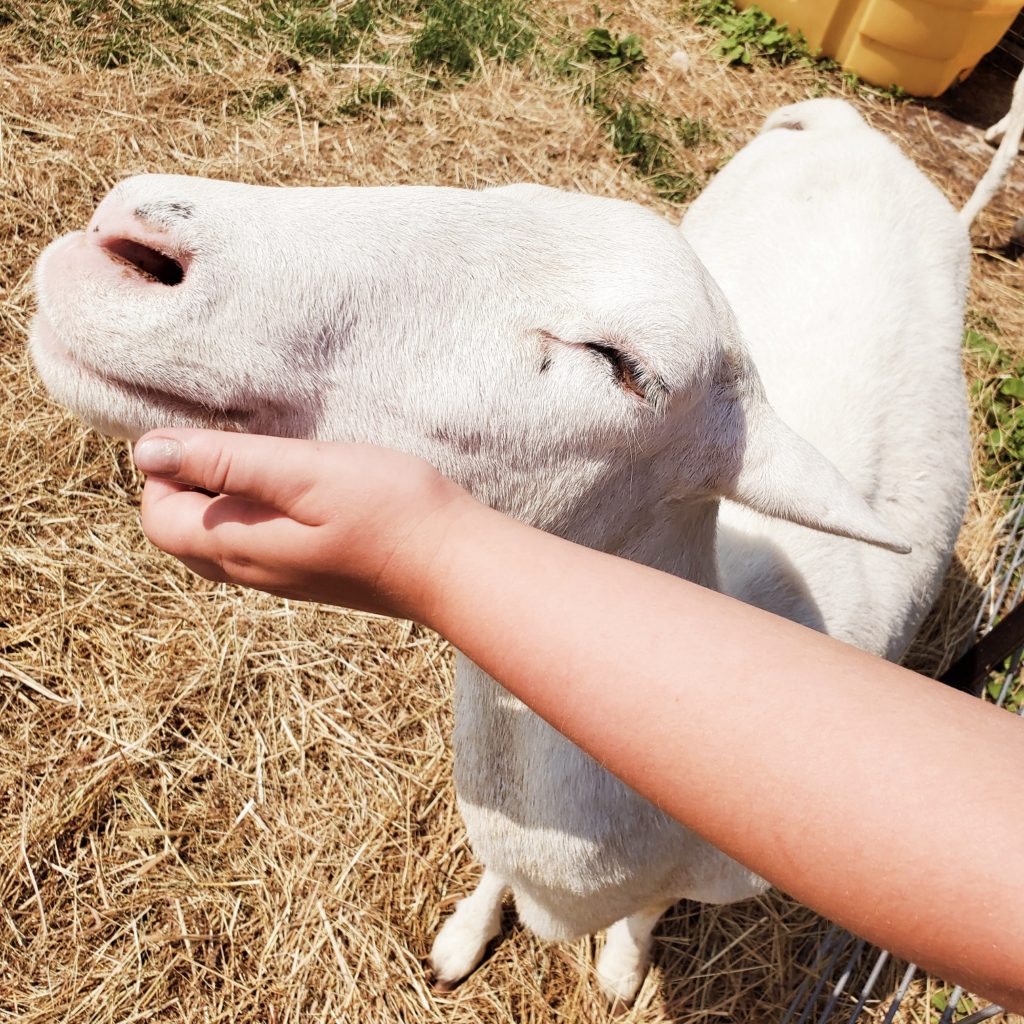
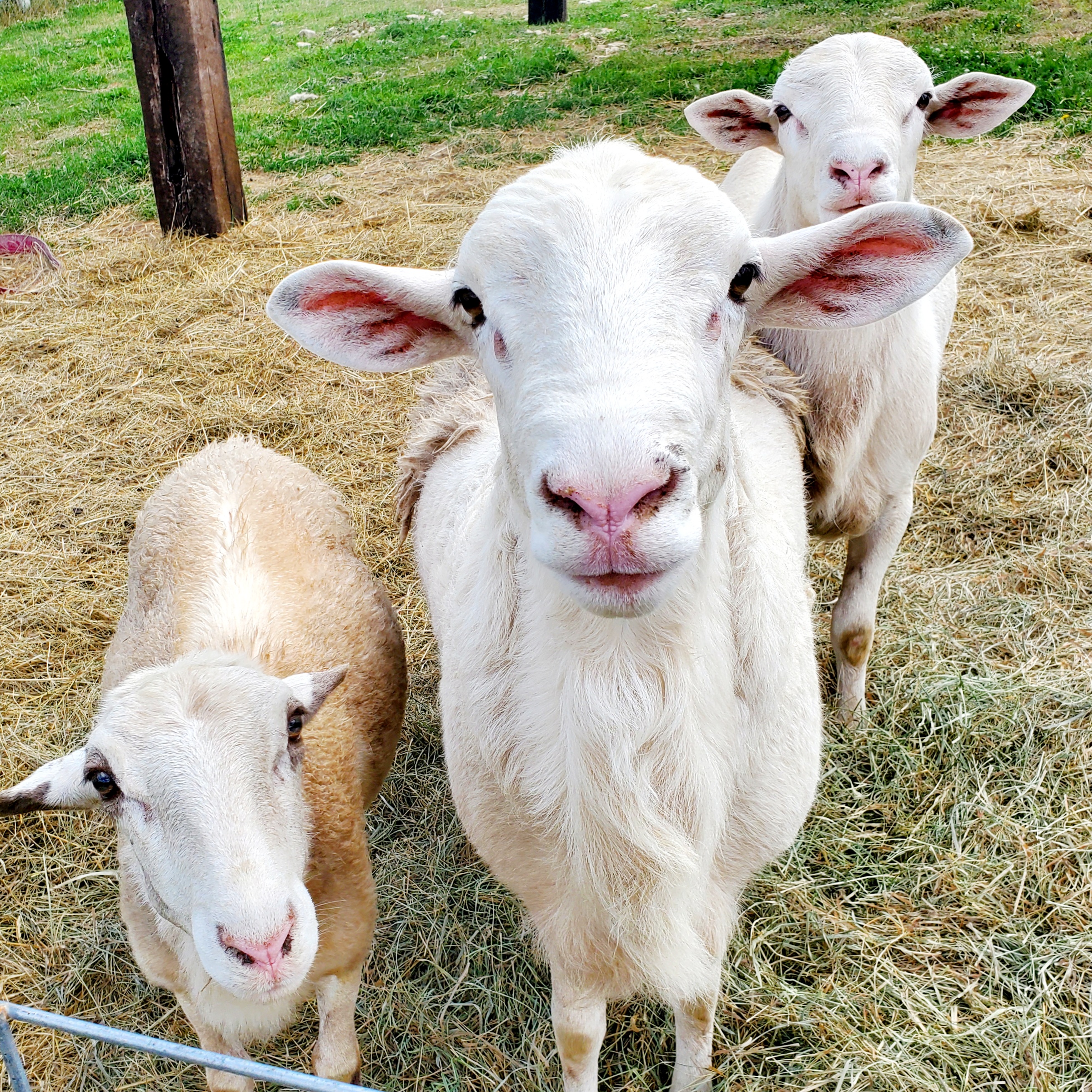

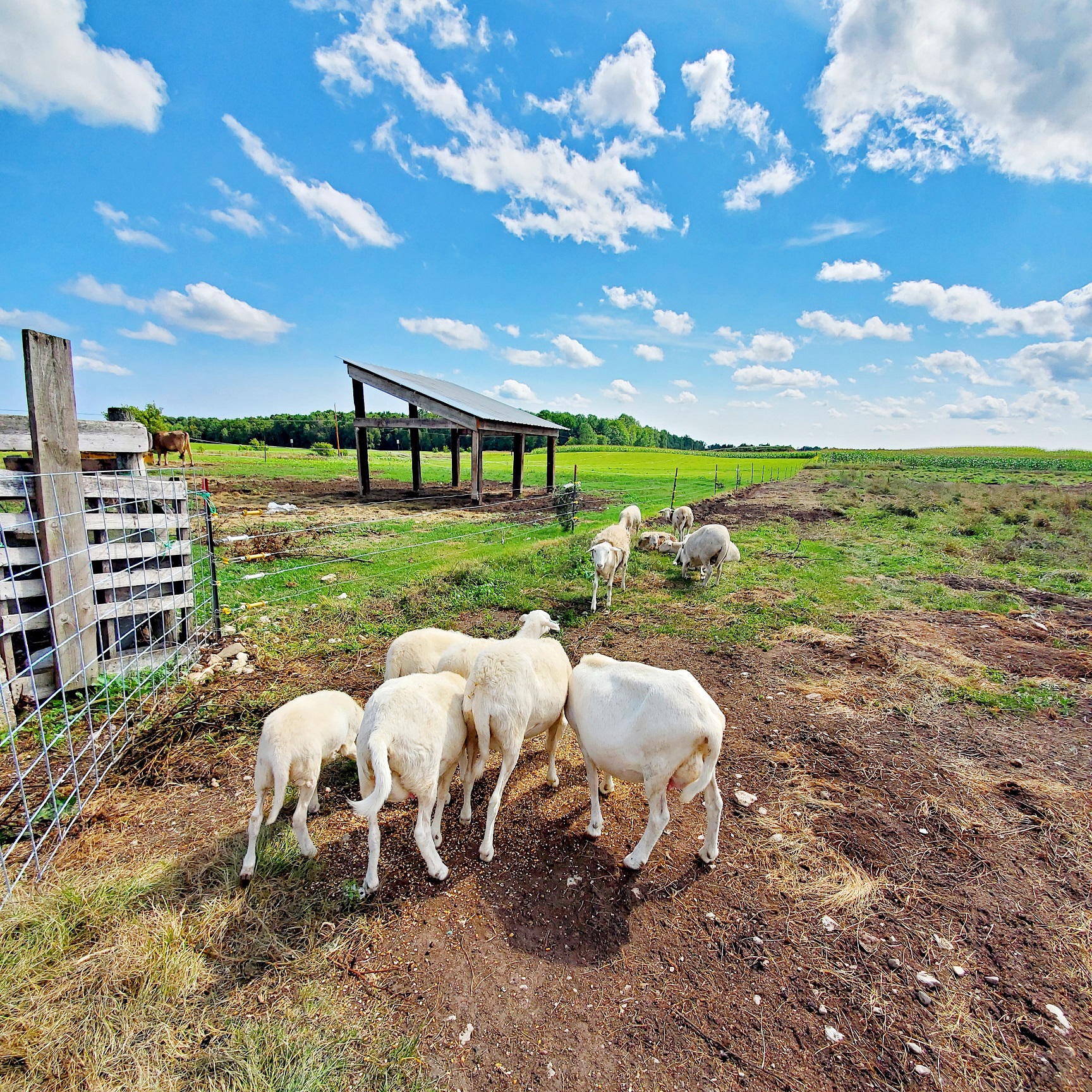


I love your adventures in farming and ranching. Keep up the good work!
It would be interesting to see what the Savory Institute and/or MSU would say about your experience with trying to pasture sheep with cattle.
Thank you for staying true to your principles!
Love the new adventure you’re on! And what lucky sheep!